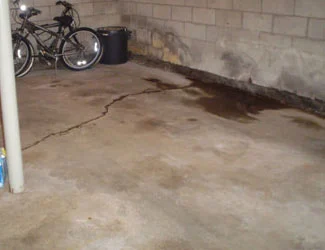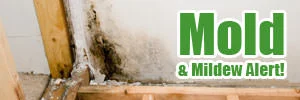Floor Cracks
Leaky Floor Crack Repair Contractor Near Post Falls, Coeur d'Alene, Spokane, and neighboring areas!
Are Leaking Cracks in your basement floor causing flooding?
Dealing with water seepage through basement floors can be a frustrating challenge for homeowners. However, basement floor cracks can be effectively repaired as part of a comprehensive perimeter drainage system.
For a free quote on repairing basement floor cracks, feel free to contact us by phone or email today!

Floods from the floor. Basement floor cracks can indeed expose basements to water underneath the slab, potentially leading to water seepage issues.
Waterproof A Leaky Floor Crack in Three steps
When addressing a leaking basement floor crack, Premier Basement Systems typically recommends installing a lateral line drainage system to effectively manage water intrusion. This process involves the following steps:
Installing a perimeter drainage system is indeed an effective first step in addressing basement water issues. This system, typically consisting of drain tiles or pipes installed around the perimeter of the basement floor, helps to collect and divert water away from the foundation before it can infiltrate the basement floor or walls. By intercepting water at the perimeter, the drainage system helps keep the basement dry and prevents potential damage from occurring.
Installing a PVC drainage line underneath the basement floor can be an effective solution for directing water away from floor cracks and towards the sump pump. This approach involves removing a section of the basement floor along the path where the PVC pipe will be installed. Once the section is removed, the PVC pipe is laid in place and properly pitched to ensure that water flows towards the sump pump.
After the PVC drainage line has been installed beneath the basement floor, the next step is to backfill the area with stone to provide stability and facilitate proper drainage. Once the backfilling is complete, fresh concrete is poured over the area to restore the floor surface.
When are Lateral Drains Needed?
In many cases, addressing basement floor cracks with a lateral drain may not be the most effective solution for waterproofing. Typically, water that accumulates beneath the basement floor can be managed by a sump pump or perimeter drainage system before it has the opportunity to seep up through the floor cracks.
Indeed, in situations where basement floor cracks are causing serious flooding issues, creating a lateral line to connect to the drainage system can be a practical solution to help mitigate water intrusion and keep the basement dry.
It’s great to know that you provide basement waterproofing services in various areas of Idaho and Washington, including Spokane, Coeur d’Alene, Post Falls, Sandpoint, Hayden, Cheney, Veradale, Rathdrum, Deer Park, Mead, and nearby locations. This wide coverage ensures that homeowners in these regions have access to professional assistance when dealing with basement water issues. If you need any further assistance or information, feel free to ask!

Sealing your basement floor is indeed crucial to prevent moisture from seeping through the porous concrete and causing issues like mold and rot, especially when installing materials like carpet or wood. A properly sealed floor creates a barrier that helps keep moisture out, ensuring a healthier and more durable basement environment.
Looking for a price? Get a no cost, no obligation free estimate.
